Index terms
|
| Transformer Less, DC Bus Concept Boost-Buck, DC-DC Converter, Full-Bridge Converter (FBC), Renewable Power System, Three-Port Converter (TPC) |
INTRODUCTION
|
| A power converter is an electrical or electro-mechanical device for converting electrical energy. This could be as simple as a transformer to change the voltage of AC power, but also includes far more complex systems. The term can also refer to a class of electrical machinery that is used to convert one frequency of alternating current into another frequency. Power conversion systems often incorporate redundancy and voltage regulation. One way of classifying power conversion systems is according to whether the input and output are alternating current (AC) or direct current (DC). |
DC to DC Converter
|
| A DC-to-DC converter is an electronic circuit which converts a source of direct current (DC) from one voltage level to another. |
| DC to DC converters are important in portable electronic devices such as cellular phones and laptop computers, which are supplied with power from batteries primarily. Such electronic devices often contain several sub-circuits, each with its own voltage level requirement different from that supplied by the battery or an external supply (sometimes higher or lower than the supply voltage). Additionally, the battery voltage declines as its stored power is drained. Switched DC to DC converters offer a method to increase voltage from a partially lowered battery voltage thereby saving space instead of using multiple batteries to accomplish the same thing. |
| Most DC to DC converters also regulate the output voltage. Some exceptions include high-efficiency LED power sources, which are a kind of DC to DC converter that regulates the current through the LEDs, and simple charge pumps which double or triple the output voltage. |
| The buck–boost converter is a type of DC-to-DC converter that has an output voltage magnitude that is either greater than or less than the input voltage magnitude. |
| The basic principle of the buck–boost converter is fairly simple |
| • While in the On-state, the input voltage source is directly connected to the inductor (L). This results in accumulating energy in L. In this stage, the capacitor supplies energy to the output load. |
| • While in the Off-state, the inductor is connected to the output load and capacitor, so energy is transferred from L to C and R. |
Related Works
|
Three Port Converters
|
| To illustrate possible embodiments of the proposed topology concept, a set of three-port converters deduced from a general topology and the basic switching cells has been presented in [4]. Several promising examples are shown in the following. |
| The three-port triple-active-bridge (TAB) converter [7]. In addition to galvanic isolation, this topology has the advantage of easily matching different port voltage levels in the overall system. This can be done just by choosing the appropriate numbers of turns for the windings. This circuit allows a fixed frequency operation and utilization of the leakage inductance of the transformer as the energy transfer element. Each bridge generates a high-frequency voltage (squarewave in the simplest case) with a controlled phase shift angle with respect to the primary side. The voltages presented to the windings have the same frequency. Power flow between the three ports can be controlled by the phase shifts. |
| The maximum possible power flow is determined by the leakage (and externally added) inductances [7]. This circuit can be operated with soft-switching, provided that the operating voltage at each port is kept near constant. However, when the port operating voltage varies widely, such as with super capacitors, the soft-switched operating range will be reduced. In [10], a method has been proposed to extend the soft-switching range by adjusting the duty ratio of the voltage (a rectangular-pulse wave) inversely proportional to the operating voltage of the port. |
| A converter topology combining a dc-link and magnetic-coupling is illustrated in Fig. 8 [3]. In this converter the main source (a fuel cell) and storage (a super capacitor) are interconnected through a dc bus, since both of them are low-voltage devices and their operating voltages are close to each other. The load port is connected through a switching bridge and transformer winding. Six switches are used and all the three power ports are bidirectional. This system is suitable for applications where the low operating voltages of the main source and storage need to be boosted to match a high load-side voltage, e.g., 400 V, to supply an inverter that produces an ac output. |
| The half-bridge structure shown in the proposed topology could be an implementation issue, especially for high power low-voltage high-current situations which would require a large number of low ESR film capacitors in parallel with the half-bridge electrolytic capacitors. In an effort to use more silicon and less passive components, the half-bridges in Fig. 8 can be replaced by full bridges [2].The resulting topology is illustrated in Fig. 9. As such, the current stress of the switching devices is reduced to a half. The operating principle remains similar to the half bridge version. However, the switching condition of the converter becomes worse. The ZVS condition no longer holds under all situations. |
Proposed System
|
| The FB-TPC is applied to a stand-alone PV power system with battery backup to verify the proposed topology. To better analyze the operation principle, the proposed FB-TPC topology is redrawn, the two source ports are connected to a PV source and a battery, respectively, while the output port is connected to a load |
| There are three power flows in the standalone PV power system from PV to load, from PV to battery, from battery to load. As for the FB-TPC, the load port usually has to be tightly regulated to meet the load requirements, while the input port from the PV source should implement the maximum power tracking to harvest the most energy. |
| Therefore, the mismatch in power between the PV source and load has to be charged into or discharged from the battery port, which means that in the FBTPC, two of the three ports should be controlled independently and the third one used for power balance. As a result, two independently controlled variables are necessary. |
Switching State Analysis
|
| Ppv = Pb + Po (1) |
| Where Ppv, Pb, and Po are the power flows through the PV, battery and load port, respectively. The FB-TPC has three possible operation modes |
| • Dual-output (DO) mode, with Ppv ≥ Po, the battery absorbs the surplus solar power and both the load and battery take the power from PV |
| • Dual-input (DI) mode, with Ppv ≤ Po and Ppv > 0, the battery discharges to feed the load along with the PV |
| • Single-input single-output (SISO) mode, with Ppv = 0, the battery supplies the load power alone. |
| When ppv = po exactly, the solar supplies the load power alone and the converter operates in a boundary state of DI and DO modes. This state can either be treated as DI or DO mode. Since the FB TPC has a symmetrical structure, the operation of the converter in this state is the same as that of SISO mode, where the battery feeds the load alone. The operation modes and power flows of the converter are listed in Table 1. The power flow paths/directions of each operation mode have been illustrated. |
| The switching states in different operation modes are the same and the difference between these modes are the value and direction of iLm, which is dependent on the power of ppv and po . In the DO mode, iLm is positive, in the SISO mode, iLm is negative, and in the DI mode, iLm can either be positive or negative. Take the DO mode as an example to analyze. |
| For simplicity, the following assumptions are made: |
| •Cpv , Cb , and Co are large enough and the voltages of the three ports, Vpv , Vb , and Vo , are constant during the steady state |
| • The Vpv ≥ Vb case is taken as an example for the switching state analysis. There are four switching states in one switching cycle. The key waveforms and the equivalent circuit in each state. |
| It can be seen from that the voltage of the PV source Vpv can be regulated with DA1 and DB 1 for the maximum power point tracking (MPPT), taking the battery voltage Vb as constant. The output voltage Vo can be tightly regulated with D1 and D3. |
| Vo = n[D1Vpv + D2 (Vb − Vpv) + D3Vb] = 2nD1 Vpv |
ZVS Analysis
|
| According to the analysis, the operation of the FB-TPC is similar to the operation of a phase-shift FBC with the two switches, driven with complementary signals. The proposed FB-TPC can utilize the leakage inductance, filter inductance, and the output capacitors of the switches to realize ZVS, zero-voltage turn-ON, and zero-voltage turn-OFF for all the switches. The operation principle is similar to the phase-shift FBC. The only difference is that in the proposed FBTPC, the magnetizing inductor of the transformer Lm can also help to achieve ZVS of the switches if the direction of iLm is the same as iP. |
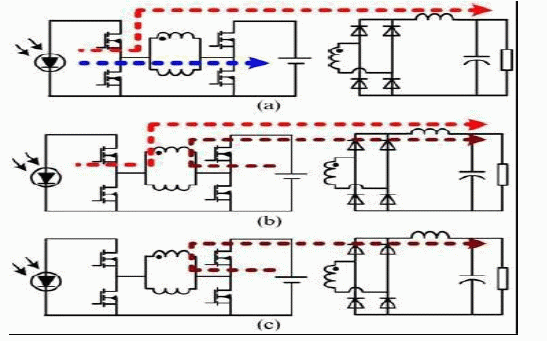 |
| Power flow paths/directions of each operation mode. (a) DO mode. (b) DI mode. (c) SISO mode. |
Design Consideration
|
| As for the semiconductor device stress, the FB-TPC is similar to the traditional FBC. But a key difference between these two converters is that the magnetizing inductance of the transformer Lm is operated as an inductor as well. We also take the Vpv ≥ Vb case as an example for analysis. |
| The steady state, we have |
| Vpv Ipv = Vb |
| Ib + VoIo |
| According to the switching states I and II, we have |
| Ipv = DA1 (ILm + nIo) |
| Where ILm is the average magnetizing current of the transformer, and then we have |
| ILm = [Ipv/ DA1] – nIo |
| Ib = D2 (ILm + nIo ) − D3 (ILm −nIo ) = |
| (DB1 − 2D3 )ILm + DB1nIo |
| Then the average transformer magnetizing current ILm can also be given by the following equation. |
| ILm =[ Ib − DB1nIo]/[ DB1 − 2D3] |
| It is noticed that ILm can be reduced by increasing the nominal values of DA1 and DB 1 this result is also valid for the Vpv < Vb case by following the same analysis procedure. Therefore, the value of ILm can be decreased with a properly designed modulation scheme. |
| With the proposed PWM scheme, when vpv is much higher than vb , vc 2 < Vtri , and vc 3 stays at zero, DB 1 will reach its maximum value. There are only three switching states, states II–IV, in one switching cycle. |
Transformer less and Virtual Bus Operation in Three Port Converter
|
| In this solution, the grid neutral line is connected directly to the negative pole of the DC bus, so that the voltage across the parasitic capacitor is clamped to zero. As a result, the CM current is eliminated completely. Meanwhile, a virtual DC bus is created to help generate the negative output voltage. |
| The required DC bus voltage is still the same as the full bridge, and there is not any limitation on the modulation strategy since the CM current is removed naturally by the circuit structure. In this way, the advantages of the full bridge and half bridge based solutions are combined together. |
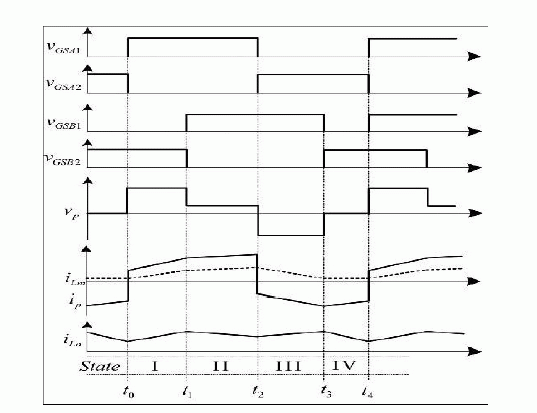 |
| Based on the innovative idea above, a novel inverter topology is proposed with the virtual DC bus concept by employing the switched capacitor technology. The proposed inverter can be modulated with the unipolar SPWM and double frequency SPWM. It consists of only five power switches and a single filter inductor, so the cost of the semiconductor and magnetic components can be reduced. |
| The required DC voltage is only half of the half bridge solution, while the performance in eliminating the CM current is better than the full bridge based inverters. Based on this idea, a novel inverter topology is proposed with the virtual DC bus concept by adopting the switched capacitor technology. |
| It consists of only five power switches and a single filter inductor. The proposed topology is especially suitable for the small power single phase applications, where the output current is relatively small so that the extra current stress caused by the switched capacitor does not cause serious reliability problem for the power devices and capacitors. |
| The FB-TPC with the two cells, cells A and B, sharing the negative terminals. Because the two cells as well as the two sources of the FB-TPC are independent, they can also be connected in other manners. |
| The other two types of FB-TPCs are there. The operation principles of these FB-TPCs are similar. The key characteristic of the FB-TPC is that the magnetizing inductor of the transformer also functions as a filter inductor, and the primary circuit acts as a four switch buck-boost converter to bridge the power flow between the two ports on the primary side. |
| However, the energy storage ability of the transformer may limit the power rating of the FB-TPC. To overcome this drawback, a block capacitor can be placed in series with the primary winding and another optimally designed inductor placed in parallel with the transformer to transfer power between the primary side’s two ports. |
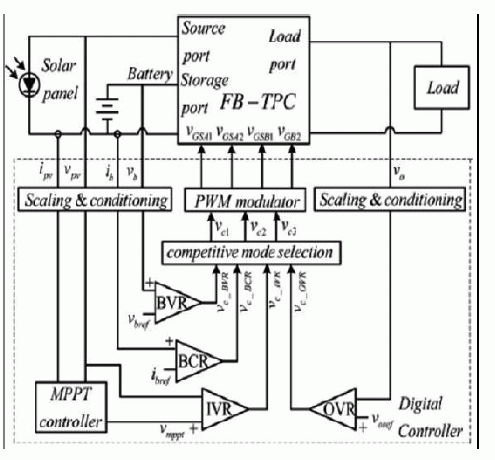 |
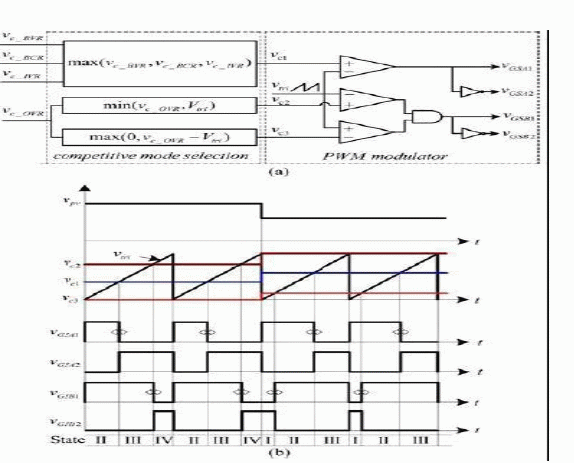 |
| The improved converter, named FB-TPC with a paralleled inductor (FB-TPC-PI), can be seen as a combination of a fourswitch buck-boost converter and an FBC with shared power switches. |
PWM Modulation in FB-TPC
|
| The power management and the control for the TPC proposed in are applied to the FB-TPC because the power control of the renewable power system with battery backup follows a similar principle and has nothing to do with the type of topology. |
| However, the PWM schemes of different converters are usually different from each other and mainly determined by the topology. For better analysis of the PWM scheme of the FB-TPC. Four regulators, PV voltage regulator (IVR) for MPPT, battery voltage regulator (BVR) for maximum voltage charging control, battery current regulator (BCR) for maximum current charging control, and output voltage regulator (OVR) for output voltage control, are used to implement the power management of the system. |
| The FB-TPC can work in the DO, DI, or SISO mode, depending on the relationship between the PV power and load power. |
| The maximum value of DB 1 is |
| DB1 max = DA1 + D3 |
| Maximum value of DA1 is determined by D3. |
| DA1 max = 1− D3 |
| Based on the analysis, the proposed PWM scheme and its generation are illustrated, where Vtri is the peak-to peak value of the carrier voltage vtri, and vc1, vc2, vc3 are control voltages generated by using a competitive method and given by the following equations: |
| vc1 = max(vc BVR, vcBCR,vc IVR) |
| vc2 = min(vc2, Vtri) |
| vc3 = max(0, vc2 − Vtri) |
Simulation Circuits and Results :
|
BOOST MODE:-
|
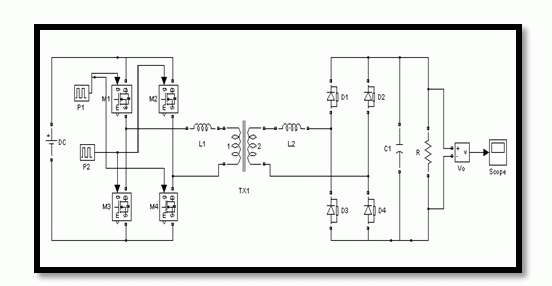 |
| Output Voltage for Boost Mode:- |
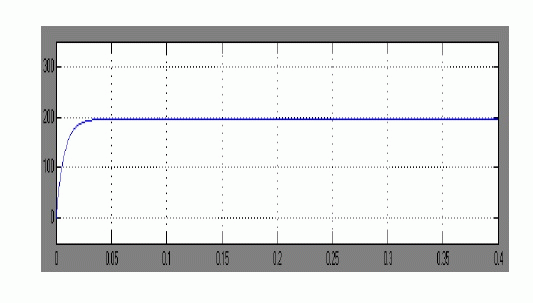 |
| BUCK MODE:- |
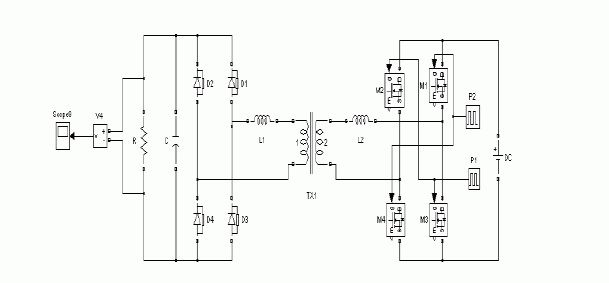 |
| OUTPUT VOLTAGE FOR BUCK MODE |
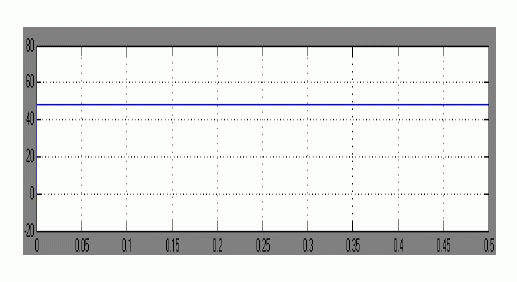 |
| PROPOSED SYSTEM |
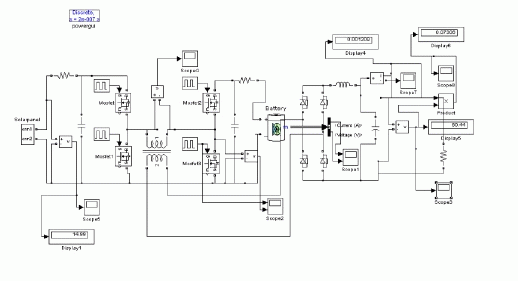 |
| CURRENT AND VOLTAGE |
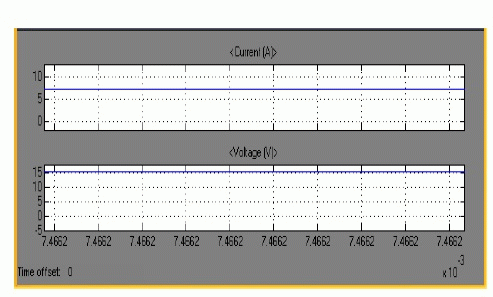 |
| OUTPUT VOLTAGE |
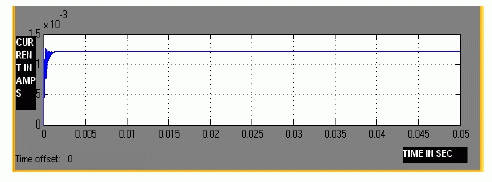 |
| OUTPUT CURRENT |
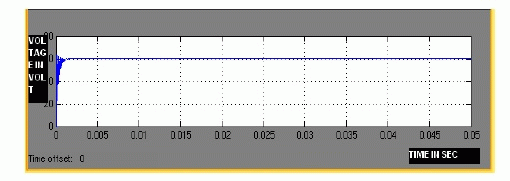 |
CONCLUSION
|
| The concept of the virtual DC bus is proposed to solve the CM current problem for the transformer less grid connected PV inverter. By connecting the negative pole of the DC bus directly to the grid neutral line, the voltage on the stray PV capacitor is clamped to zero. It consists of only five power switches and a single filter inductor. And also the FB-TPC has connected through the efficient way for renewable power systems. My input voltage of the renewable power system is 40.3v and the output is 230v. That’s the efficient method for connected the renewable power system and grid. |
Tables at a glance
|
 |
| Table 1 |
|
| |
Figures at a glance
|
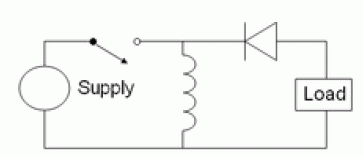 |
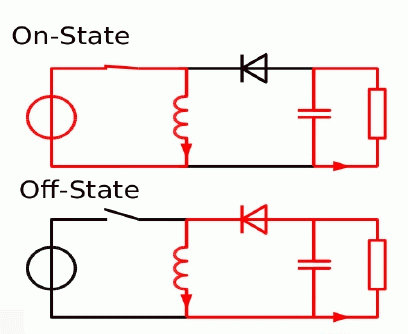 |
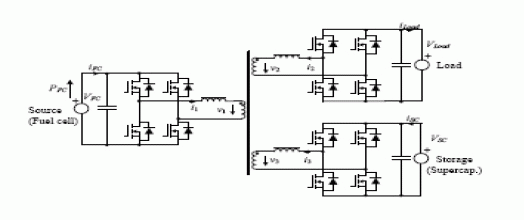 |
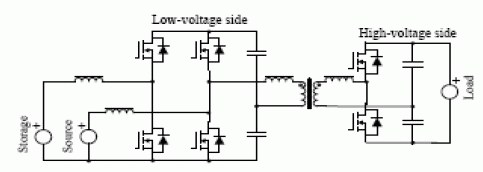 |
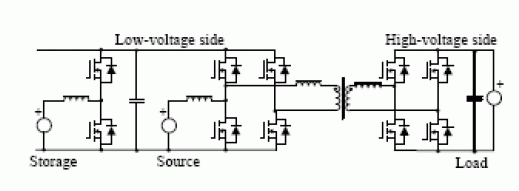 |
| Figure 1 |
Figure 2 |
Figure 3 |
Figure 4 |
Figure 5 |
|
| |
References
|
- Kwasinski A, âÃâ¬Ãâ¢Quantitative evaluation of DC microgrids availability: Effects of system architecture and converter topology design choices,IEEE TRANS. POWER ELECTRON., VOL.26, NO.3, MAR. 2011.
- Jiang W and Fahimi B, âÃâ¬Ãâ¢Multi-port power electric interface for renewable energy sources, in Proc. IEEE APPL. POWER ELECTRON.CONF., APRIL. 2009.
- Jiang W and Fahimi B, âÃâ¬Ãâ¢Multiport power electronic interface—Concept modeling and design,IEEE TRANS. POWER ELECTRON.,VOL.26, NO.7, JUL. 2011.
- Tao H, Duarte J, and. Hendrix M, âÃâ¬Ãâ¢Multiport converters for hybrid power sources, IEEE PROC. POWER ELECTRON. SPEC. CONF.,JUL.2008.
- TaoH, Kotsopulos and. Hendrix M, âÃâ¬Ãâ¢Family of multiport bidirectional dc-dc converters, INST. ELECTR. ENG. PROC. ELECT.POWERAPPL., VOL.153, NO.15, MAY 2006.
- Abdel-Rahman, and BatarsehI, âÃâ¬Ãâ¢Modeling and control of three-port DC/DC converter interface for satellite applications, IEEE TRANS.POWER ELECTRON, VOL.25, NO.3, MAR.2010.
- Qian Z, and BatarsehI, âÃâ¬Ãâ¢An integrated threeportinverter for stand-alone PV applications, presented at THE IEEEENERGY CONVERS.CONGR.EXPO. ATLANTA, GA, 2010.
- Zhang J, and GeH, âÃâ¬Ãâ¢A family of threeport half-bridge converters for a stand-alone renewable power system, IEEE TRANS. POWERELECTRON., VOL.26, NO.9, SEP. 2011.
- Zhao C, andJohannW, âÃâ¬Ãâ¢An isolated three-port bidirectional DC-DC converter with decoupled power flow management, IEEE TRANS.POWER ELECTRON., VOL.23, NO.5, SEP. 2008.
- DuarteL, andSimoesG, âÃâ¬Ãâ¢Three-port bidirectional converter for hybrid fuel cell systems, IEEE TRANS. POWER ELECTRON, VOL.22,NO.2, MAR. 2007.
|